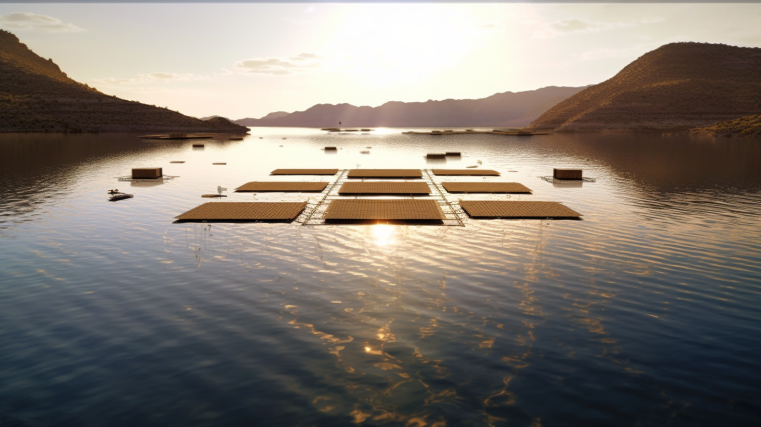Floating solar panels are being suggested as a solution for green energy generation in places where land is either scarce or too expensive to justify building solar farms. The floating solar panels, sometimes called “floatovoltaics”, can’t be installed on open ocean or anywhere with big waves, but work well on reservoirs, lakes and calm parts of the coast.
According to Nature Sustainability, this technology has the potential to power thousands of cities. Their report states that floating photovoltaic (FPV) systems on reservoirs could be better for “land conservation, efficiency improvement and water loss reduction” than solar farms on land.
The panels float on the surface of the water and are kept from drifting out of position by cables attached to the seabed. This is one of the reasons why it’s a challenge to install this technology in deep water. It is thought that they could prevent part of the water evaporating as it is increasingly subject to global warming; possibly conserving 106 cubic kilometres of water each year. This is about as much used annually by 300 million people. The water underneath them also keep the panels from overheating as they can do on land, meaning they are 15% more efficient. However, there are concerns that the lowered temperature beneath the floatvoltaics could disrupt wildlife habitats. They also cost about 25% more to install than traditional systems on land.
If 114,555 reservoirs were 30% covered in floatovoltaics, capped at 30 sq kilometres per reservoir, it’s been estimated that overall 9,000 terawatt hours could be generated each year. That’s more than double the electricity consumed by the US in 2021. Scientists predict that 6,256 cities in 124 counties could entirely rely on floatovoltaics in the future. This is due to their small populations along with the size and location of their local reservoirs.
With solar looking like such a promising option, countries all around the world are investing huge amounts of time and money into planning such projects. A question they are all looking for answers to is where to put all the solar panels they’ll need, reservoirs is looking like a likely answer. California is also exploring the possibility of installing panels over canals.
The countries likely to benefit most from floating photovoltaics are the U.S, China, Brazil, India and Canada. These are some of the world’s most emitting countries so hopefully this technology will have a positive global impact by replacing some of their fossil fuel use.
In the Netherlands, they’re going a step further and have designed an innovative system of floating photovoltaics that move to follow the sun. Similar developments are being worked on all over the world. Some say the technology will grow by 43% each year in the coming decade, reaching a value of $24.5bn in 2031.
Floatovoltaics are touted as a possible solution to the extensive land usage of traditional solar panels. But what they make up for in effiency of space, they potentially lose in their disruption of ocean habitats. A 2022 report found that the space beneath traditional solar panels on land could provide vital habitats for pollinators. These habitats are often scarce now that large parts of our land are cultivated for agriculture. However, as floatavoltaics address, these traditional ways of building solar panels take up too much space to be viable at scale.
It’s likely that floatovoltaics won’t be the sole solution to scaling renewable energy but it may be a significant innovation in making decarbonisation less disruptive. Perhaps by building solar farms both on land and on water, we could create a situation with the most possible benefits.










